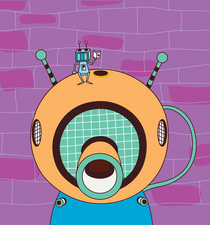Correcting exposure retrospectively with Urban Lightscape
On the Dot

The Urban Lightscape photo tool lets you adjust local brightness levels within an image, thus turning a simple snapshot into a real eye-catcher.
You have a great subject and have captured it impeccably in a photograph, but when you open the file on your computer, you notice an overexposed spot that leaves part of the image blurry or difficult to see. Don't panic; try Urban Lightscape [1], a tool that adjusts brightness just in the area that really needs fixing.
Urban Lightscape is available for Windows, Mac, and Linux. License fees are charged for the Windows and Mac versions, but the program is available for free for Linux users who are willing to build it from the source code. Ubuntu users can also obtain Urban Lightscape through a PPA archive [2], which simplifies the installation for non-technical users. All you need is a short excursion to the command line:
$ sudo add-apt-repository ppa:dhor/myway $ sudo apt-get update $ sudo apt-get install urbanlightscape
[...]
Buy this article as PDF
(incl. VAT)
Buy Linux Magazine
Subscribe to our Linux Newsletters
Find Linux and Open Source Jobs
Subscribe to our ADMIN Newsletters
Support Our Work
Linux Magazine content is made possible with support from readers like you. Please consider contributing when you’ve found an article to be beneficial.

News
-
Parrot OS Switches to KDE Plasma Desktop
Yet another distro is making the move to the KDE Plasma desktop.
-
TUXEDO Announces Gemini 17
TUXEDO Computers has released the fourth generation of its Gemini laptop with plenty of updates.
-
Two New Distros Adopt Enlightenment
MX Moksha and AV Linux 25 join ranks with Bodhi Linux and embrace the Enlightenment desktop.
-
Solus Linux 4.8 Removes Python 2
Solus Linux 4.8 has been released with the latest Linux kernel, updated desktops, and a key removal.
-
Zorin OS 18 Hits over a Million Downloads
If you doubt Linux isn't gaining popularity, you only have to look at Zorin OS's download numbers.
-
TUXEDO Computers Scraps Snapdragon X1E-Based Laptop
Due to issues with a Snapdragon CPU, TUXEDO Computers has cancelled its plans to release a laptop based on this elite hardware.
-
Debian Unleashes Debian Libre Live
Debian Libre Live keeps your machine free of proprietary software.
-
Valve Announces Pending Release of Steam Machine
Shout it to the heavens: Steam Machine, powered by Linux, is set to arrive in 2026.
-
Happy Birthday, ADMIN Magazine!
ADMIN is celebrating its 15th anniversary with issue #90.
-
Another Linux Malware Discovered
Russian hackers use Hyper-V to hide malware within Linux virtual machines.

